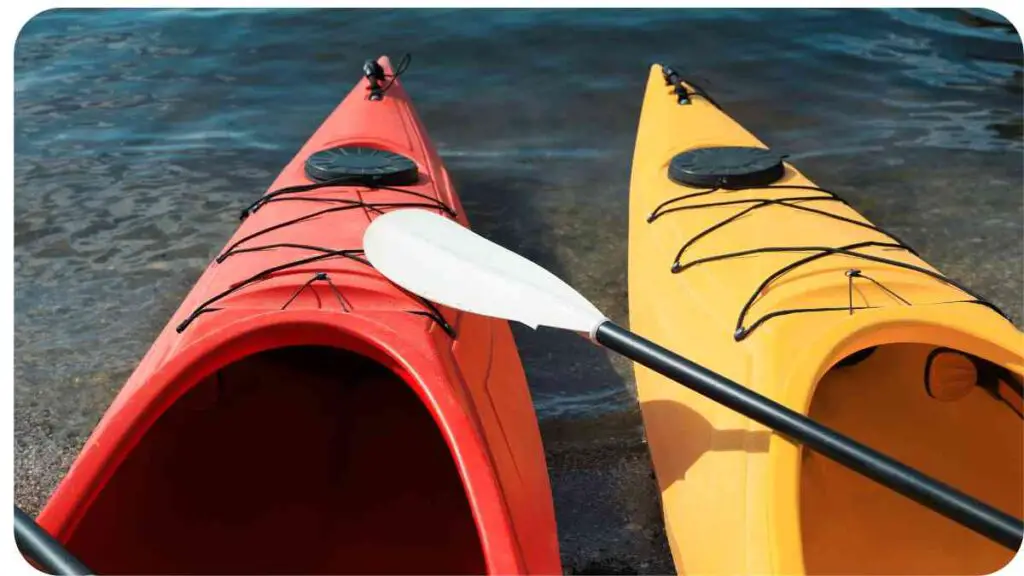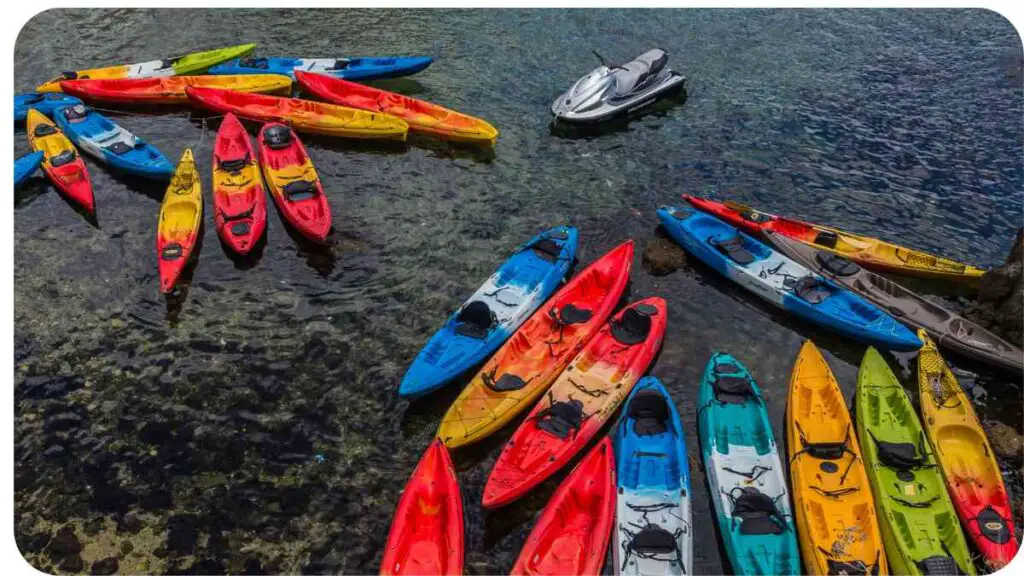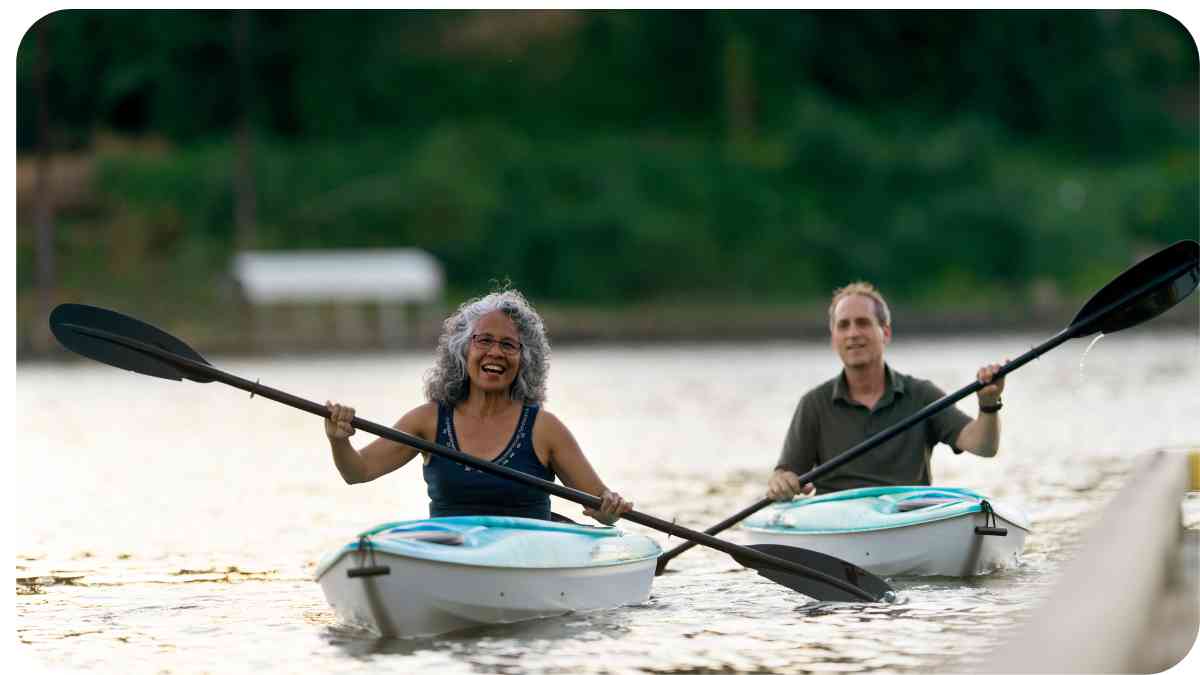Learn how to quickly and effectively repair a cracked kayak paddle without the need for specialized tools or expertise. In this guide, we’ll walk you through the essential steps and techniques to restore your broken paddle to its former strength and functionality.
Whether you’re an experienced paddler or just starting out, knowing how to fix a broken kayak paddle can save you time and money, ensuring you can get back on the water with confidence.
| Takeaways |
|---|
| Understanding the techniques and materials for fixing a broken kayak paddle |
| Exploring the use of epoxy or adhesive designed for paddle repair |
| Considering the use of fiberglass or carbon fiber reinforcements for strengthening the paddle |
| Contacting the manufacturer for professional repairs if needed |
| Learning how to prevent paddle board paddle issues and maintain proper care |
| Exploring resources and forums for further insights and discussions on paddle repair |
| Gaining knowledge on repairing inflatable kayaks and maintaining their integrity |
| Recognizing the importance of cleaning, storing, and lubricating paddle board paddles |
| Being aware of common issues and troubleshooting methods for paddle board paddles |
| Acquiring basic knowledge of kayak paddle repair without the need for specialized tools |
How to Fix a Broken Kayak Paddle at Home

Repairing a cracked, chipped, or broken kayak paddle can be done easily at home or in the field using two main methods:
- Epoxy Resin Repair:
- Utilize epoxy resin, a powerful adhesive that forms a robust bond when dry.
- Combine with fiberglass cloth and tape for added strength and durability, breathing new life into your damaged paddle.
- Wood Splinting with Duct Tape or Gorilla Glue:
- Temporarily splint the wood together using duct tape or gorilla glue.
- Reinforce by attaching aluminum fittings with screws or rivets for a sturdy and reliable fix.
When it comes to kayak paddles, durability is a key factor. If you’re considering an inflatable kayak, it’s important to understand their longevity and performance. Read about the owner experiences and insights on are inflatable kayaks durable to make an informed decision for your kayaking adventures.
1. Prepare the Broken Pieces
Before commencing the gluing process, follow these essential steps to prepare the broken pieces of your paddle for a robust and visually pleasing repair:
- Cutting Apart with Precision:
- Use a knife to carefully cut apart the broken pieces of your paddle, ensuring a clean separation.
- Smoothing Jagged Edges:
- Employ sandpaper or an emery board to smooth out any jagged edges, preventing them from tearing through the glue during the repair.
- Addressing Rough Spots:
- If there are rough spots, use a file or additional sandpaper to meticulously file them down until the entire surface is smooth and even.
- Ensuring Flush Alignment:
- Crucially, confirm that both halves of the paddle are flush with each other before applying glue. This ensures not only a strong repair but also an aesthetically pleasing result.
| Step | Action |
|---|---|
| 1 | Assess the damage to the kayak paddle |
| 2 | Gather the necessary repair materials and tools |
| 3 | Clean the broken pieces of the paddle |
| 4 | Apply epoxy adhesive to the broken ends |
| 5 | Align and join the broken pieces together |
| 6 | Clamp or secure the paddle for proper bonding |
| 7 | Allow the adhesive to cure according to the manufacturer’s instructions |
| 8 | Remove any excess adhesive and smoothen the repaired area |
| 9 | Test the paddle for strength and functionality before use |
2. Glue the Pieces Together
Now that you have the prepared pieces, proceed to glue them together to restore your broken paddle. Consider the following options for effective and lasting repairs:
- Superglue or Hot Glue Gun:
- Opt for superglue or a hot glue gun for a quick fix. These adhesives can provide satisfactory results, especially for minor damages.
- Epoxy Resin:
- Choose epoxy resin for a more robust and enduring bond. Epoxy, when combined with the prepared surfaces, ensures a strong connection that withstands the rigors of paddling.
- Two-Part Epoxy Resin with Sanding:
- For an extra layer of reinforcement and a polished finish, use a two-part epoxy resin. After application, sand the repaired area to achieve a smooth and seamless result.
Are you a DIY enthusiast looking to take on a kayak project? Discover the satisfaction of building your own kayak in the comfort of your garage. Our step-by-step guide on how to build a kayak in the garage provides all the information you need to embark on this exciting journey.
3. Hold the Pieces Firmly Together
After bringing the pieces together, it’s crucial to secure them firmly using clamps for a stable and seamless repair. Here’s why clamps are indispensable in this situation:
- Preventing Shifting:
- Clamps play a vital role in preventing any movement or shifting of the pieces during the gluing process, ensuring precise alignment for a strong bond.
- Safety from Splinters:
- Protect your hands from potential splinters by using clamps. They act as a barrier, minimizing the risk of injuries caused by wood chips during assembly.
- Concealing the Repair:
- With enough clamps applied and sufficient pressure, the repaired paddle can regain its original appearance. Properly clamped pieces ensure that the repair is virtually undetectable.
- Caution on Clamp Placement:
- Exercise caution when placing clamps, ensuring they are out of reach of anyone who might repurpose them for unrelated projects. This prevents accidental damage to paddles and ensures a safe repair environment.
4. Use a Clamp to Secure the Pieces
Secure the integrity of your repair by employing a clamp to hold the broken pieces together. Follow these steps for optimal results:
- Preferred Clamp Usage:
- If available, use a specifically designed clamp to secure the broken pieces. This ensures a more controlled and stable environment during the repair.
- Alternative Clamp Options:
- In the absence of a dedicated clamp, any type available in your home or craft shop can suffice. Improvise with what you have to keep the two pieces firmly together as you proceed with the repair.
- Maintain Alignment:
- Regardless of the clamp type, prioritize maintaining proper alignment between the broken pieces. This step is crucial for achieving a seamless and effective repair.
- Stability during Repair:
- The clamp serves as a stabilizing force, preventing any unintended movement or misalignment during the repair process.
| Step | Action |
|---|---|
| 1 | Assess the damage to the paddle |
| 2 | Gather the necessary repair materials, including a clamp |
| 3 | Align the broken pieces of the paddle |
| 4 | Apply adhesive to the broken ends |
| 5 | Secure the paddle pieces together using the clamp |
| 6 | Ensure proper alignment and tightening of the clamp |
| 7 | Allow the adhesive to cure according to the manufacturer’s instructions |
| 8 | Remove the clamp once the adhesive has fully cured |
| 9 | Test the repaired paddle for strength and functionality |
5. Enhance Adhesion
In this straightforward yet effective step, optimize the adhesion of the glue and fortify your paddle:
- Sit on the Paddle:
- After gluing the pieces together, sit on the paddle for approximately 5 minutes. Allow the weight of your body to apply pressure evenly across all components.
- Locking Pieces in Place:
- This simple act significantly contributes to locking the glued pieces in place, promoting a secure and durable bond.
- Fill Gaps with Caution:
- If you need to fill gaps or spaces between broken pieces, consider adding more glue. However, exercise caution and use this method only when working with epoxy, ensuring compatibility and effectiveness.
Enhancing your kayaking technique can greatly enhance your overall experience on the water. Whether you’re a beginner or an experienced paddler, there’s always room for improvement. Dive into our comprehensive tips and tricks to learn how you can improve your kayaking technique and make the most out of your kayaking adventures.
6. Allow Overnight Drying
Exercise patience and allow your repaired paddle to dry thoroughly for a minimum of 24 hours before resuming use. Follow these steps for optimal results:
- Time for Drying:
- Leave the paddles undisturbed overnight to ensure the adhesive cures completely. This extended drying time is crucial for the longevity of the repair.
- Vigilance After Drying:
- After the initial drying period, keep a close eye on the repaired paddle. Any signs of weakness or issues should be addressed promptly.
- Re-soaking Precaution:
- If the paddle gets wet again, consider re-soaking it as needed. Proper care and preventive measures can help avoid further damage and maintain the integrity of the repair.
| Step | Action |
|---|---|
| 1 | Assess the damage to the paddle |
| 2 | Gather the necessary repair materials |
| 3 | Prepare the broken pieces for repair |
| 4 | Apply adhesive to the broken ends |
| 5 | Align and join the broken pieces together |
| 6 | Ensure a secure fit |
| 7 | Leave the paddle undisturbed overnight |
| 8 | Allow the adhesive to fully cure |
| 9 | Test the repaired paddle for strength and functionality |
7. Remove Excess Glue
After the drying period, refine the appearance of your repaired paddle by removing excess glue:
- Use Sandpaper or a Sharp Knife:
- Employ a piece of sandpaper or a sharp knife to peel off excess glue. This step is crucial for achieving a smooth and polished finish.
- Angle the Blade:
- If using a knife, hold the blade at an angle. Press down firmly on the hardened glue, scraping it off in long strokes towards you.
- Check for Deep Marks:
- Inspect the repaired area for any deep marks left by the scraper. Address these marks promptly to ensure a level surface.
- Smooth Out with Sandpaper:
- Use sandpaper to smooth out any remaining imperfections until they are level with the paddle’s surface. This step contributes to the overall aesthetics of the repair.
When it comes to choosing a kayak, the material used in its construction plays a significant role. Fiberglass and plastic are two popular options, each with their own set of advantages. Delve into our guide on fiberglass kayaks vs. plastic kayaks to understand the differences and make an informed decision for your kayaking needs.
8. Sand Smooth for Enhanced Aesthetics and Performance
Once your paddles are straight and free of excess glue, proceed to sand them for a refined finish that contributes to both appearance and functionality:
- Importance of Sanding:
- Sanding is essential not only for aesthetic purposes but also for enhancing the durability and performance of the paddle.
- Sanding Both Sides:
- Perform sanding on both sides of each paddle to ensure even appearance and consistent smoothness.
- Selecting Quality Sandpaper:
- Choose high-quality sandpaper for optimal results. Brands like Norton or Stearns & Foster, offering coarse grits (50–80) in sizes ranging from 8 to 12 inches, are suitable for smoothing out imperfections.
- Addressing Rough Spots:
- The coarseness of selected sandpapers is ideal for smoothing out rough spots caused by machining or damage during storage or transport.
- Keeping Sandpaper Wet:
- Maintain the effectiveness of the sandpaper by keeping it wet during the process. Use water or another dampening agent like vinegar to minimize heat generation and improve material removal.
Mastering the Art of Kayak Paddle Repair at Home

With the simple and effective steps outlined, you can confidently fix a broken kayak paddle in the comfort of your home. However, there’s one crucial tip to remember: keep your repair a secret. Follow these final steps for a polished repair:
- Remove Old Grip Tape:
- Begin by removing the old grip tape from your paddle blade. Ensure it’s thoroughly cleaned before proceeding.
- Apply New Grip Tape:
- Add new grip tape along the entire length of your paddle blade. Ensure even distribution and avoid gaps between pieces for a seamless finish.
- Trim Excess Material:
- Trim off any excess material around the newly added grip tape to prevent protruding pieces that may cause harm.
If you’re on a budget but still want to enjoy the thrill of kayaking, finding an affordable kayak is crucial. Our guide on finding the best cheap kayaks provides valuable insights and recommendations, helping you get on the water without breaking the bank.
Conclusion
For novice kayakers, mastering the art of fixing a broken paddle is a valuable skill. Not only does it save you money on costly replacements, but it also instills the confidence to address any future challenges.
By learning these essential repair techniques, you’re well-equipped for a seamless and enjoyable kayaking experience. So, gear up and get ready for countless good times on the water, knowing that you have the knowledge and skills to overcome any paddling obstacle that comes your way!
Further Reading
Here are some additional resources for further reading on related topics:
- Help! My Paddle Board Paddle Won’t Come Apart: Discover solutions and tips for dealing with a stuck paddle on your paddleboard.
- StandUpZone Forum: Paddle Board Paddle Issues: Join the discussion on the StandUpZone Forum to explore various threads related to paddle board paddle problems and find insights from the community.
- Inflatable Kayak Repair: Tips and Techniques: Learn about repairing inflatable kayaks, including patching leaks, addressing punctures, and maintaining the overall integrity of your inflatable kayak.
FAQs
Here are some frequently asked questions related to the topic:
How do I fix a broken kayak paddle?
To fix a broken kayak paddle, you can consider options such as using epoxy or adhesive designed for paddle repair, utilizing fiberglass or carbon fiber reinforcements, or contacting the manufacturer for professional repairs.
What are common issues with paddle board paddles?
Some common issues with paddle board paddles include difficulty in disassembling the paddle, wear and tear on the blade or shaft, and loose or damaged connections between the paddle components.
Can I repair an inflatable kayak myself?
Yes, it is possible to repair an inflatable kayak yourself. Techniques such as patching leaks, using PVC or urethane adhesive, and reinforcing damaged areas can help restore the functionality and integrity of the kayak.
How can I prevent my paddle board paddle from getting stuck?
To prevent your paddle board paddle from getting stuck, it’s important to clean and rinse the paddle after each use, avoid exposing it to extreme temperatures, store it properly in a dry and protected area, and periodically lubricate the connections.
Are there any specialized tools required for kayak paddle repair?
While specialized tools are not always necessary for basic kayak paddle repairs, having epoxy or adhesive suitable for paddle repair, sandpaper, and fiberglass or carbon fiber reinforcements can be helpful in more extensive repair work.

Hellen James is an outdoor enthusiast, writer, and hiker. She loves to explore the world around her by immersing herself in nature and visiting new places.


